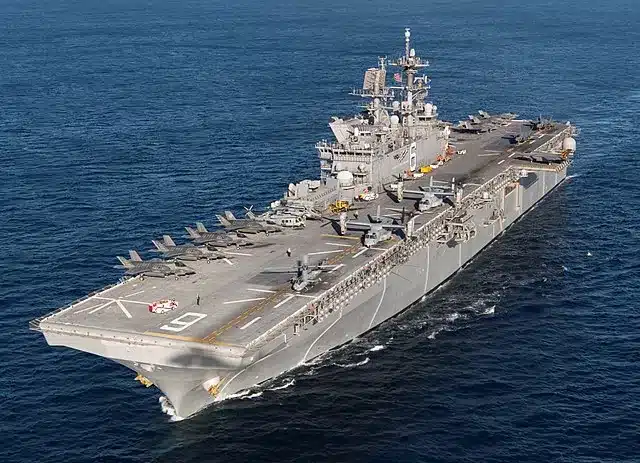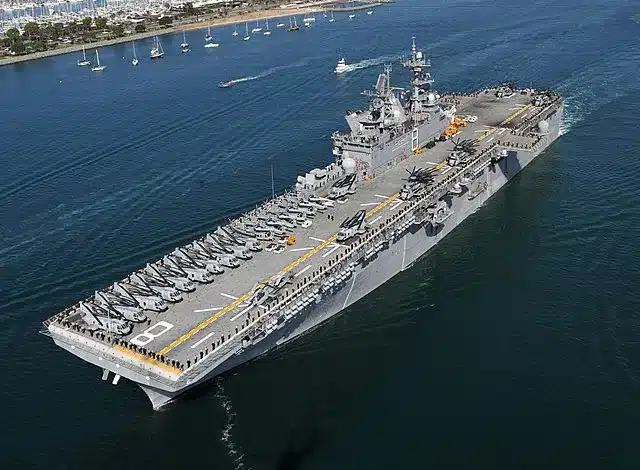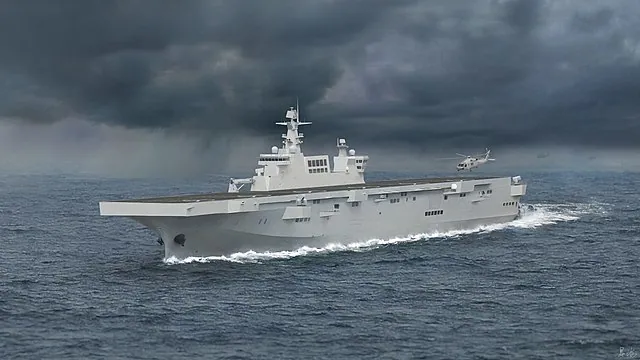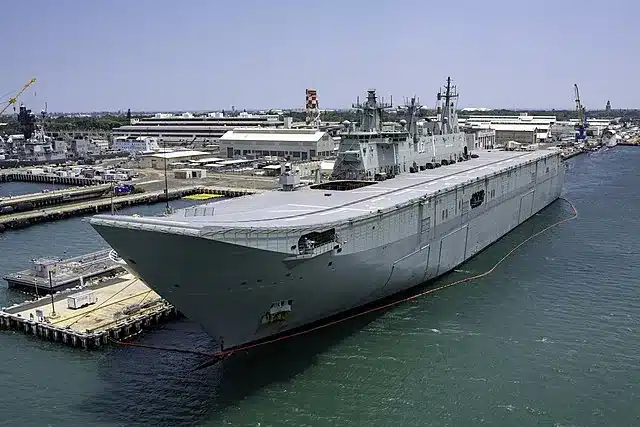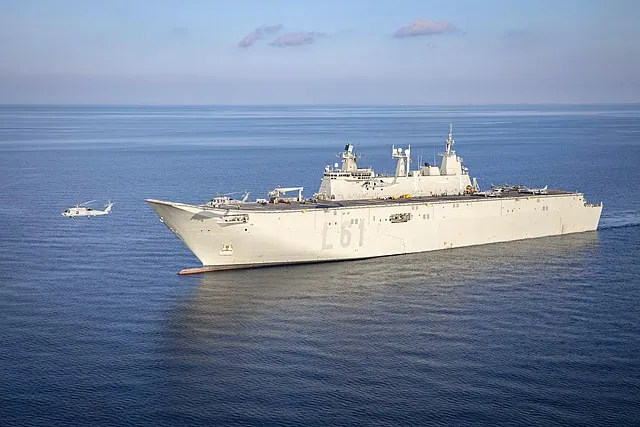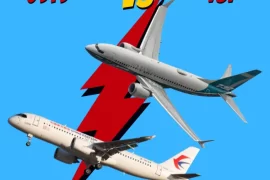In the realm of naval warfare, the evolution of technology has brought forth a fascinating array of vessels designed to dominate both the sea and the land. Among these, amphibious assault ships stand as a testament to strategic prowess. These vessels are a unique blend of maritime power projection and expeditionary capabilities, enabling nations to swiftly deploy ground forces and aircraft to distant shores. This article delves into the world’s five most powerful amphibious assault ships, exploring their capabilities and contributions to modern naval warfare.
Amphibious Assault Ships: A Brief History
The concept of amphibious assault dates back decades, with historical examples like the Normandy landings during World War II. However, it wasn’t until the latter half of the 20th century that the development of dedicated amphibious assault ships began to take shape. These vessels are specifically designed to transport and deploy ground forces, armored vehicles, and aircraft for offensive operations against enemy positions along coastlines. They serve as vital tools for projecting military might in remote regions and facilitating humanitarian and disaster relief efforts.
Shinshū Maru: Prototype of amphibious assault ships
The Shinshū Maru, built in 1934, is the world’s first purpose-built landing ship. It is the pioneering prototype of amphibious assault ships. Notable for its groundbreaking design, it boasted a well deck capable of flooding to release landing craft from an open stern gate.
Additionally, the ship featured an ingenious deck-level parking garage for vehicles, enabling direct vehicle discharge onto piers. Although equipped with catapults for aircraft, operational seaplanes were absent. Nevertheless, the vessel could transport and unload aircraft, a concept further developed in successors like Akitsu Maru, which introduced a short take-off flight deck. The Shinshū Maru’s innovative functions set the stage for modern amphibious assault ships’ capabilities.
List of the world’s 5 most powerful amphibious assault ships
The world’s 5 most powerful amphibious assault ships are America class (USA), Wasp class (USA), Type 075 class (China), Canberra class (Australia) and Juan Carlos (Spain).
1. America Class (USA)
Manufacturers: Huntington Ingalls Industries, Ingalls Shipbuilding Division
Operators: United States Navy
Cost: The initial program cost for three ships was estimated at US$10.094 billion ($3.4 billion per unit in FY15).
Commissioning: The ships have been in commission since 2014.
Active Fleet: 2
The America Class amphibious assault ship is the most powerful amphibious assault ship in the world. Currently, they are the largest vessels ever built in their category. They are emblematic of the United States’ commitment to naval supremacy. Surpassing even some aircraft carriers in size, these formidable vessels herald a new era in amphibious warfare capabilities.
Derived from the Wasp class, the America class is a testament to continual innovation. These ships boast expanded deck space and enlarged hangar facilities, accommodating a higher complement of aircraft below decks. USS America, the lead ship commissioned in 2014, is presently the sole active vessel of this class, with one under construction and a third planned. The America class is destined to replace the aging Tarawa class, ushering in advanced capabilities.
Uniquely optimized for the MV-22 Osprey tilt rotor transports and F-35B stealthy STOVL multi-role fighters, the America class can double as small aircraft carriers. A versatile combination of helicopters and STOVL aircraft, including the F-35B JSF, MV-22 Osprey, UH-1Y Huey, CH-53E Sea Stallion, and more, can be accommodated, based on mission requirements.
While the first two vessels in this class prioritize aviation operations without well decks, favoring helicopter deployments, forthcoming America class ships will introduce well decks for amphibious assault by sea. This flexibility allows for more secure and strategically advantageous operations. Accommodating up to 1,700 marines and their equipment, the America class stands as a symbol of the United States’ maritime might, ensuring swift and decisive global action.
2. Wasp Class (USA)
Manufacturers: Ingalls Shipbuilding Division
Operators: United States Navy
Cost: Roughly 2 billion dollars ( 2021 estimate).
Commissioning: The ships have been in commission since 1989.
Active Fleet: 7
The Wasp class, a successor to the Tarawa class, emerged as a significant advancement in amphibious warfare capabilities. Lead by the USS Wasp commissioned in 1989, these vessels share a foundational hull and engineering with their predecessors. During their introduction, Wasp class ships stood as the world’s largest amphibious assault ships, although the subsequent America class ships have since surpassed them in size.
A groundbreaking feature of the Wasp class was their unique ability to operate both AV-8B Harrier II aircraft and a fleet of LCAC hovercraft. These vessels could house up to three LCACs or twelve LCMs, enabling versatile amphibious operations.
The Wasp class ships are designed to carry a formidable 2,000-strong marine expeditionary unit. Landing craft transport troops to the beach, while helicopters facilitate inland deployments. These vessels can also accommodate 61 AAV7A1 amphibious assault vehicles.
Boasting a flight deck with nine helicopter landing spots, the class supports a variety of aircraft. Up to 42 CH-46 Sea Knights, AH-1 SeaCobra attack helicopters, CH-53E Super Stallions, UH-1N Twin Hueys, and the adaptable SH-60B Seahawk can be deployed. In combat roles, the class accommodates six to eight AV-8B Harrier IIs, with a maximum capacity of 20.
The Wasp class stands as a testament to the United States’ commitment to amphibious expeditionary capabilities, playing a pivotal role in modern naval warfare.
3. Type 075 Class (China)
Manufacturers: Hudong–Zhonghua Shipbuilding
Operators: PLA Navy
Cost: N/A
Commissioning: The ships have been in commission since 2021
Active Fleet: 3
In 2011, China embarked on an ambitious endeavor, commencing the development of a new breed of amphibious assault ships – the Type 075 class. Evidently, they draw inspiration from U.S. amphibious assault ships. Notably, the lead ship was constructed at a remarkable pace, considering it was an entirely novel undertaking for China’s shipbuilding industry. The first one was commissioned in 2021.
The Type 075 class represents a significant augmentation of China’s amphibious capabilities, which hitherto relied on the smaller and less capable Type 071 amphibious transport docks. Anticipated to carry approximately 30 helicopters, including Z-8, Z-9, Z-18, Ka-28, and Ka-31 models. While the possibility of accommodating VSTOL aircraft exists, China currently lacks suitable aircraft for this purpose, despite ongoing engine development initiatives.Moreover, the Type 075 class’s flexible design accommodates multiple landing craft or a pair of Type 726A hovercraft, akin to the U.S. LCAC.
4. Canberra Class (Australia)
Manufacturers: Navantia, Ferrol, Spain and BAE Systems Australia, Victoria
Operators: Royal Australian Navy
Cost: A$1.55 billion (estimated in 2007) per unit
Commissioning: The ships have been in commission since 2014.
Active Fleet: 2
Australia’s Canberra class amphibious assault ships, while smaller than their American counterparts, are emblematic of the nation’s commitment to maritime prowess. The HMAS Canberra, commissioned in 2014, heralded a new era of Australian naval capabilities.
Designed by a Spanish company, the Canberra class bears similarities to Spain’s Juan Carlos I. Both of them share dimensions but differ in internal layout and island superstructure. These multi-functional vessels combine the strengths of air and amphibious assault capabilities. The Juan Carlos I excells in aerial prowess while the Canberra class dominates in amphibious operations.
With a capacity for 1,125 marines, extendable to 1,600 for short periods, the ships boast two vehicle decks for light and heavy vehicles, accommodating around 45 main battle tanks or numerous lighter vehicles. Four LCM-1E landing craft are housed in the well deck for troop, vehicle, and supply transfer to shore.
The flight deck caters to NH90 or S-70B Seahawk helicopters, with room for up to four larger Chinook-sized helicopters operating simultaneously. Accommodating eight medium-sized helicopters in the hangar, an additional ten can be hosted in the light vehicle deck. Notably, the ships feature sky-jump ramps, with potential modifications required for fixed-wing aircraft like the F-35B, though current plans do not include their operation.
The Canberra class signifies Australia’s strategic maritime advancements, reinforcing its capabilities in both regional and global naval operations.
5. Juan Carlos I (Spain)
Manufacturers: Navantia
Operators: Spanish Navy
Cost: 462 million Euro
Commissioning: 2010
Active Fleet: 1
Commissioned in 2010, the Juan Carlos I amphibious assault ship stands as a pinnacle of Spanish naval capability.
Sharing dimensions akin to the Australian Canberra class, the Juan Carlos I distinguishes itself through a different internal layout and island superstructure. The ship’s standout characteristic lies in its robust air wing capabilities, juxtaposed against the Canberra class’s superior amphibious assault prowess.
Engineered to accommodate V/STOL (Vertical/Short Takeoff and Landing) aircraft, the ship boasts eight spots for AV-8B Harriers, four spots for CH-47 Chinook medium helicopters, and a slot for the V-22 Osprey tilt-rotor transport. The vessel can house up to 30 aircraft, attesting to its versatile aviation capabilities.
Despite its formidable aerial capabilities, the Juan Carlos I remains well-rounded. It accommodates up to 900 marines. It also carries a complement of 46 main battle tanks. Its amphibious capabilities increase with four mechanized landing craft (LCMs) or a single hovercraft (LCAC) in the stern dock. These facilitates seamless amphibious landing operations.
The Juan Carlos I plays an essential role in safeguarding maritime interests and projecting power beyond Spain’s shores.
Summary of the world’s 5 most powerful amphibious assault ships
In conclusion, Amphibious assault ships stand at the crossroads of naval power and expeditionary capabilities. These vessels enable nations to swiftly project their force across land and sea. They have become indispensable tools for modern warfare and humanitarian operations. The America, Wasp, Type 075, Canberra, and Juan Carlos I classes exemplify the cutting-edge technologies and strategic foresight. As geopolitical dynamics continue to evolve, these vessels will remain vital assets in shaping the course of global events.


